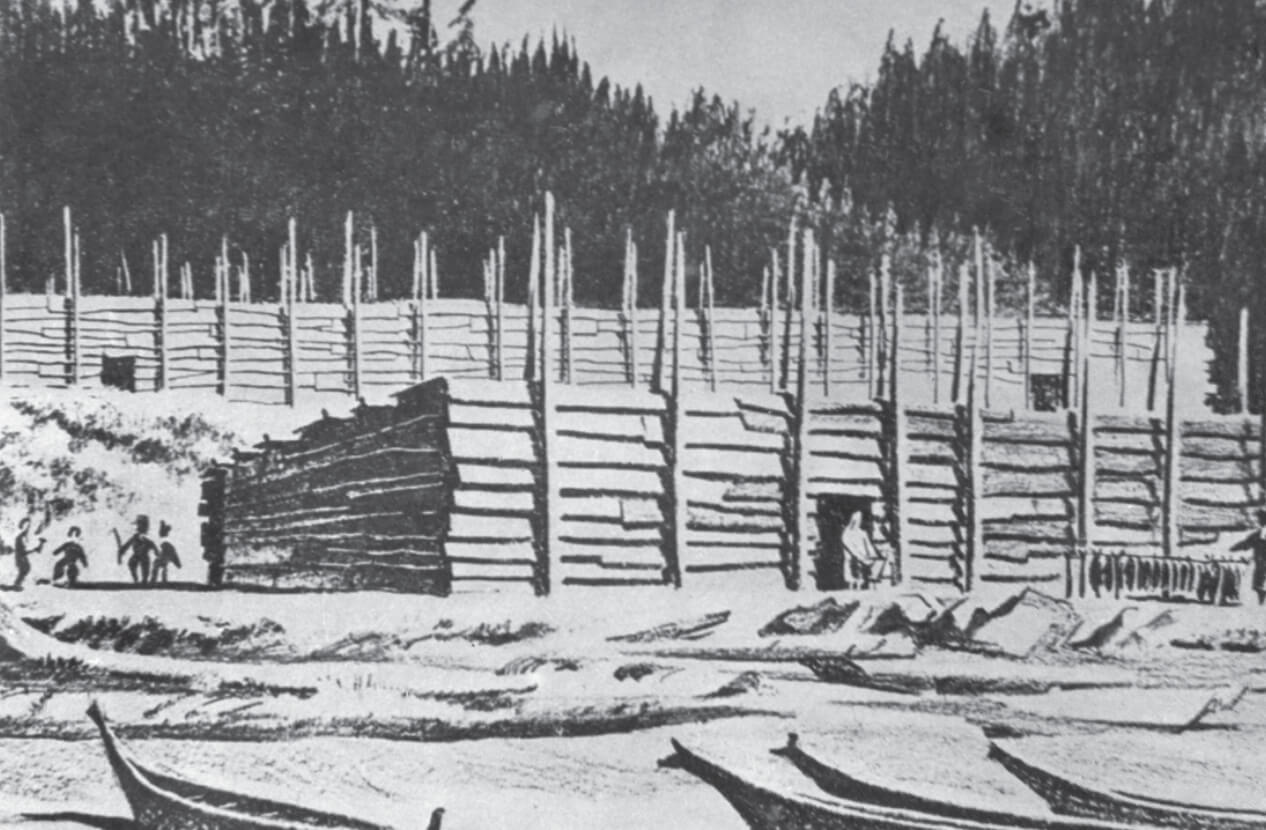The Salish Sea Tribes peoples constructed “what were once the largest structures in North America”: 200-foot-long shed roof houses that lined the Salish Sea coast (modern-day Puget Sound and Straits of Georgia and Juan de Fuca) for hundreds of years. Most of the components of a shed roof plank house were made from plentiful western red cedar. Its straight, tall trunk, lack of knots and branches, and resistance to rot make it ideal for pre-industrial engineering.
The structure itself was built in a specific order. First, the permanent posts, thick as the cedars from which they were cut, lined the length of the rectangular perimeter. Next, the crossbeams were placed in notches on top of the permanent posts to span the width. Fastening was unnecessary as the sheer weight of the beams kept the structure stable even during a seismic event. Finally, the roof rafters were thin planks placed lengthwise on the crossbeams. Two types of roof planks were placed side-to-side to allow rain runoff, and excess water was directed away from the structure in wood plank drains. The walls and door were made of cedar planks and any gaps filled in with moss, seaweed, or clay.
Today, the only known location of original structure remnants is in British Columbia in the lands of the Nuu-cha-nulth First Nations. If you want to know more about the Salish Sea peoples’ shed roof plank houses, see Christina Wallace’s Architecture of the Salish Sea Tribes of the Pacific Northwest.
Info source: “Architecture of the Salish Sea Tribes of the Pacific Northwest SHED ROOF PLANK HOUSES,” by Christina L. Wallace. link: http://fitchfoundation.org/wp-content/uploads/2017/05/FITCH_Christina-Wallace_final_web.pdf
